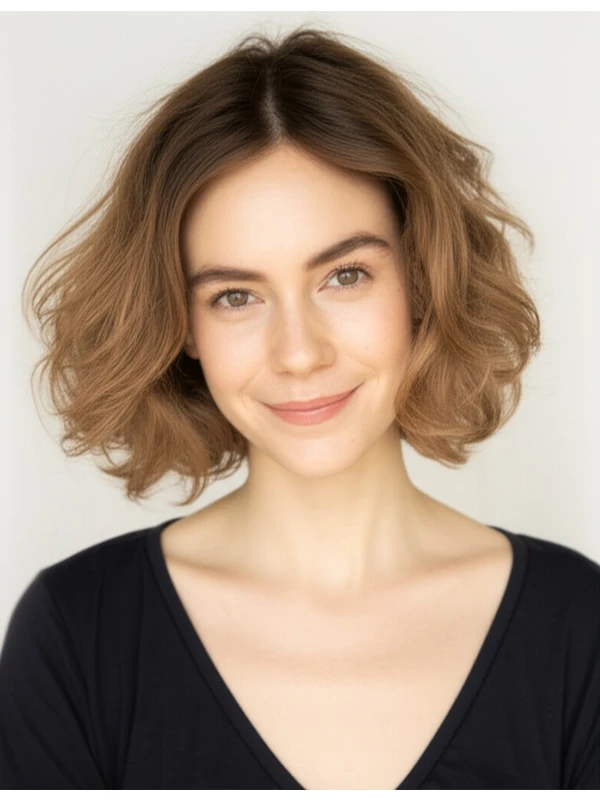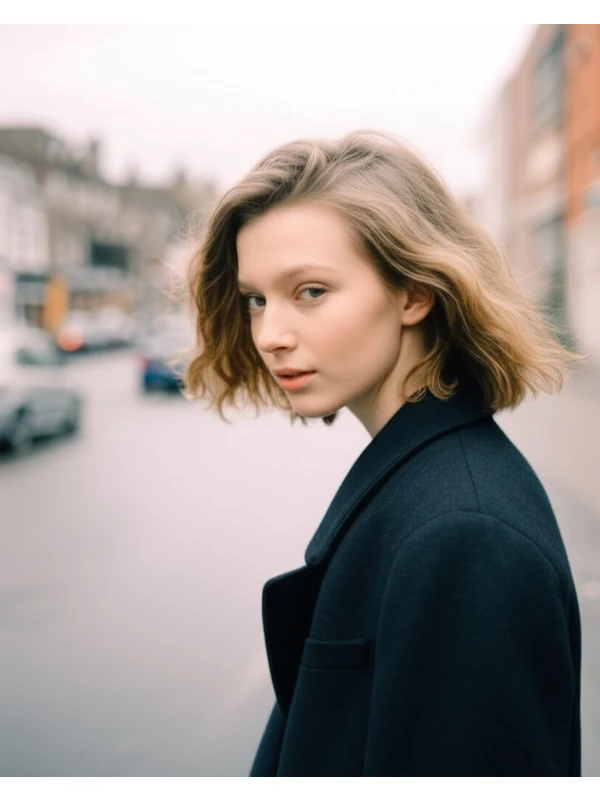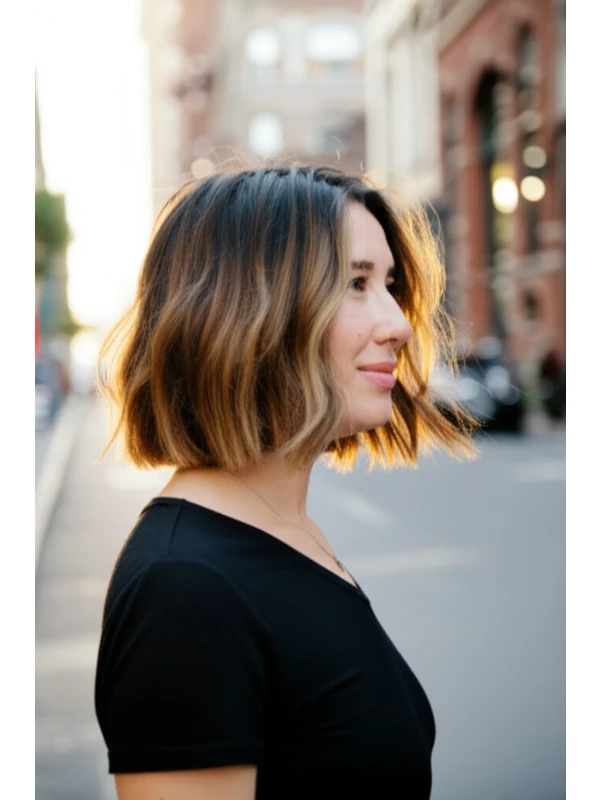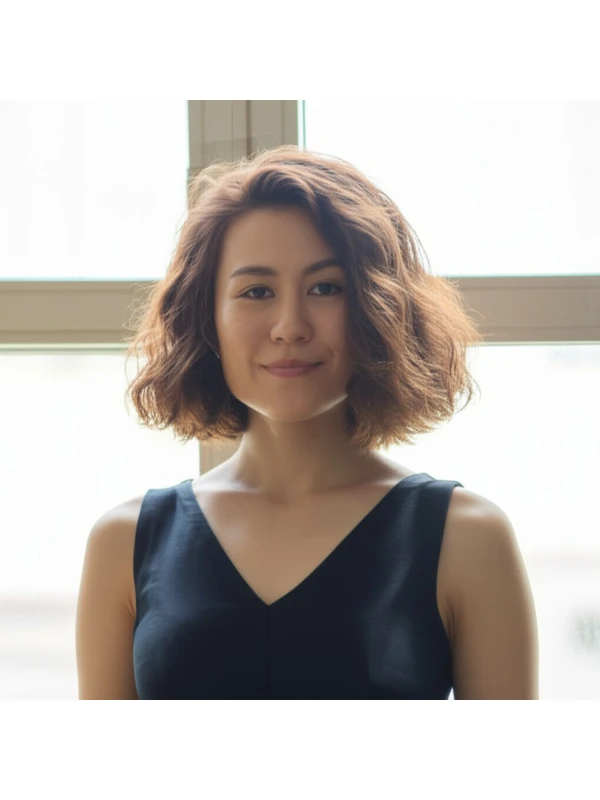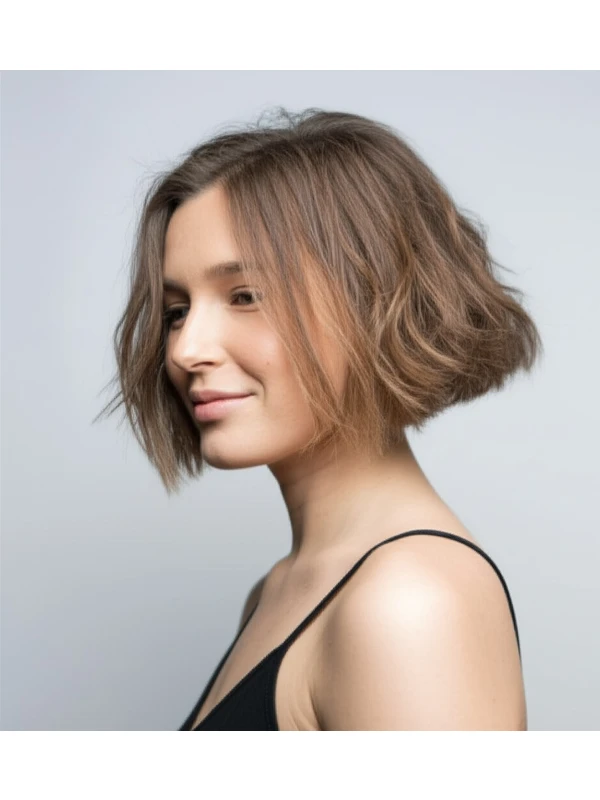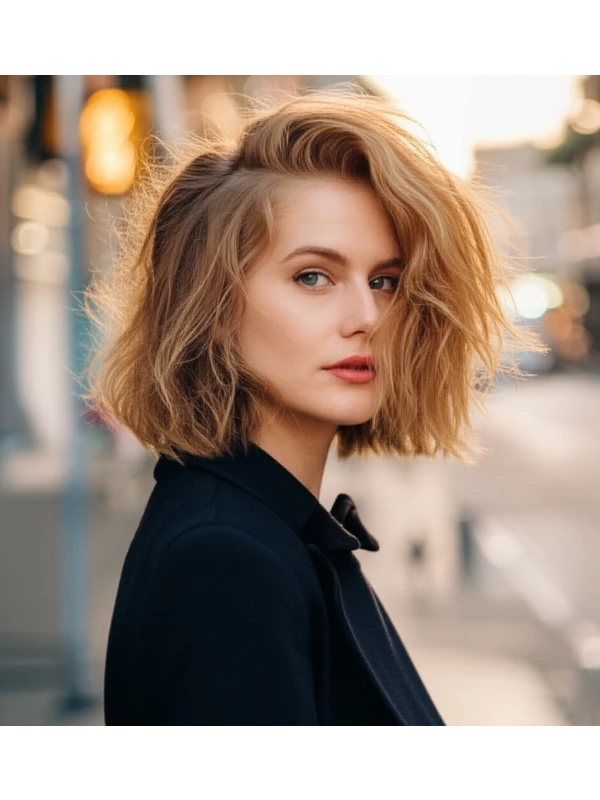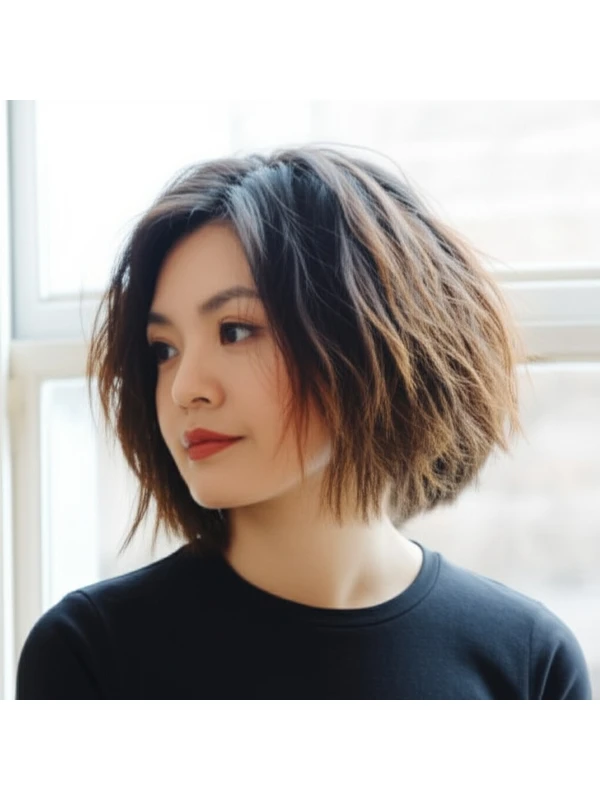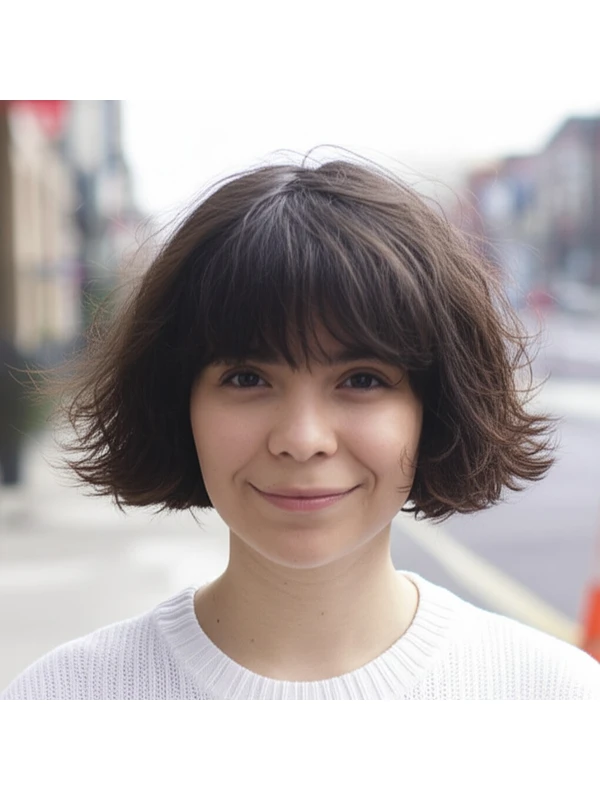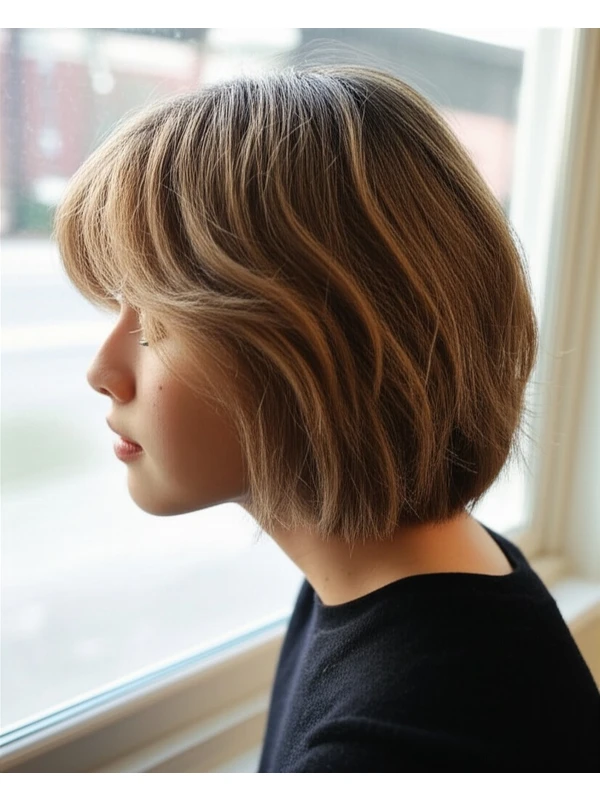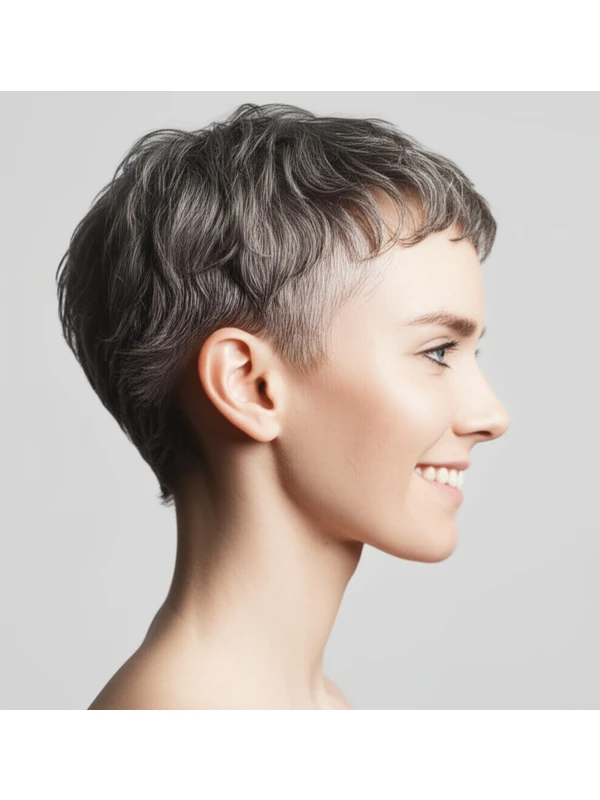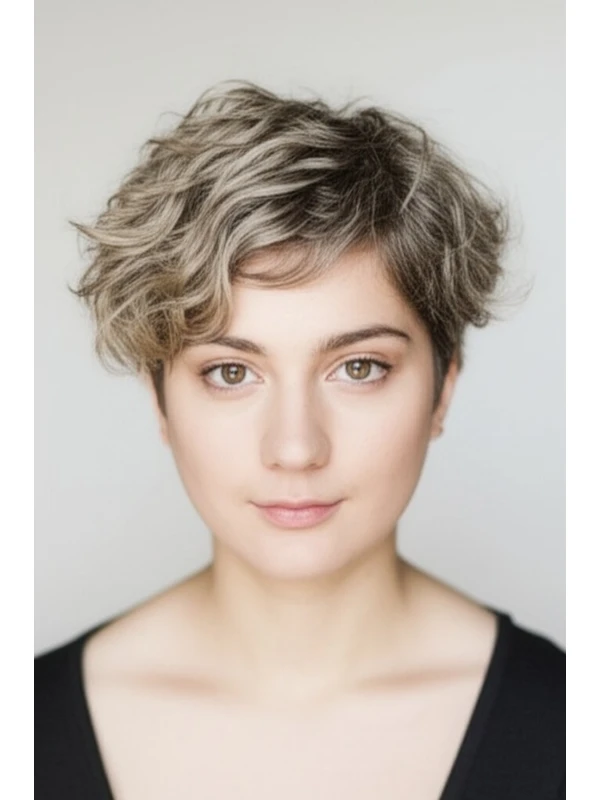#The V-Cut Hairstyle: A Modern Classic
The v-cut hairstyle is having a major moment – and for good reason! It's flattering on many face shapes and hair types, offering a modern edge with effortless style potential. Let’s dive into everything you need to know about this increasingly popular cut.
#1) Background & Definition: What Is the V-Cut?
The v-cut gets its name from the shape created at the bottom of the haircut – resembling the letter "V." It's essentially a layered hairstyle where the lengths are progressively shorter towards the face, creating a sharp angle. This angularity draws attention to your cheekbones and jawline.
Key Features:
- Angled Ends: The defining characteristic - layers that taper down towards the chin or collarbone.
- Face-Framing Effect: The shortest layers typically frame the face, softening features and highlighting bone structure.
- Volume & Movement: Layers create natural movement and can add volume to finer hair.
Typical Length Ranges:
- Chin-Length (Bob): A classic v-cut bob sits right at the chin.
- Collarbone-Length (Lob/Midi): This is a very popular length, offering versatility for styling.
- Shoulder-Length & Longer: The V shape can be adapted to longer lengths too, though the angle might be less dramatic.
Alternative Names:
You might also hear it called:
- Angled Bob/Lob
- Pointed Cut
- V-Shaped Layers
#2) Face Shape Fit: Finding Your Angle
The v-cut is surprisingly versatile, but understanding how it interacts with your face shape is key.
- Oval: Lucky you! The v-cut flatters oval faces beautifully. It enhances the natural symmetry and balance. Fringe Option: A curtain fringe or a wispy, side-swept bang would be gorgeous.
- Round: The angled lines of the v-cut help to elongate a round face, making it appear slimmer. Avoid overly blunt cuts – keep those angles sharp! Fringe Option: Side-swept bangs are ideal for softening fullness. A full, blunt fringe is generally not recommended.
- Square: The softness of the V shape softens the strong lines of a square face. The angle can create more definition around the jawline. Fringe Option: A textured, piecey bang or soft curtain fringe will complement this cut well.
- Heart: The v-cut balances a wider forehead and narrower chin typical of heart shapes. It adds width to the lower portion of the face. Fringe Option: A side-swept fringe can help balance the forehead, while a center part emphasizes symmetry.
- Diamond: Similar to heart shapes, the v-cut softens diamond faces by adding softness and volume around the jawline. Fringe Option: A wispy bang or curtain bangs work well to soften angles.
- Oblong (Long): A shorter v-cut bob can help visually shorten a long face. Longer versions need careful layering to avoid elongating further. Fringe Option: Avoid heavy, straight-across fringes which will accentuate length. A textured fringe or no fringe is generally best.
#3) Body Proportions & Height Guidance: Shaping Your Silhouette
Beyond your face shape, consider your overall body proportions and height. The v-cut can subtly alter how you appear!
- Petite: A chin-length or collarbone-length v-cut works well without overwhelming a smaller frame. Avoid excessively long lengths that can visually chop off the neck.
- Average Height: Most v-cut lengths are flattering for average heights, allowing flexibility in styling and volume placement.
- Tall: A longer v-cut (shoulder length or slightly below) balances out height and creates a more proportionate look.
- Narrow Shoulders: Adding volume at the sides with angled layers can visually broaden narrow shoulders.
- Broad Shoulders: Keeping the layering balanced and avoiding excessive volume on the top of the head helps to maintain proportion.
- Short Neck: A chin-length v-cut bob is usually best, as longer styles can emphasize a shorter neck. Avoid too much volume at the crown.
- Long Neck: A slightly longer v-cut (collarbone or shoulder length) can help visually shorten the neck.
#4) Works Best With Hair Types & Densities: Finding Your Match
The beauty of the v-cut lies in its adaptability, but certain hair types and densities benefit most.
- Straight Hair: The sharp angles are easily achieved and defined with minimal effort.
- Wavy Hair: Layers enhance natural waves, creating a bouncy, textured look. Be mindful of frizz – a smoothing serum is your friend!
- Curly/Coily Hair: While possible, this cut requires careful planning and execution by an experienced stylist who understands curl patterns. The V shape can be achieved with strategic layering to remove weight and encourage definition. Shrinkage Note: Curls and coils will shrink considerably after drying – factor this into the initial length.
- Fine Hair: Layers add volume, but avoid too many layers which can make hair appear thinner overall.
- Medium/Thick Hair: The v-cut excels at removing weight and creating shape in medium to thick hair.
- Density Tips: For denser hair, more layers are needed to achieve the desired lightness and movement.
#5) Styling Variations: From Sleek to Textured
The v-cut is a blank canvas for your styling creativity!
- Sleek vs. Textured: A sleek style uses a smoothing serum or oil for a polished look. Texturizing products like sea salt spray or mousse enhance natural texture and create piecey definition.
- Middle vs. Side Part: A middle part creates symmetry and balance, while a side part adds softness and movement.
- Fringe Variations: Curtain bangs, wispy bangs, blunt bangs (less common), or no fringe – the possibilities are endless!
- Occasion Styling:
- Casual: Air-dried with a texturizing product for effortless cool.
- Office: Sleek and straight with minimal flyaways.
- Evening: Add volume at the roots with mousse, curl the ends slightly for added drama.
#6) Maintenance: Keeping Your V Sharp
Regular maintenance is key to preserving the v-cut’s shape.
- Trim Cadence: Every 6-8 weeks (or sooner if you have curly/coily hair).
- At-Home Routine: Gentle shampoo and conditioner, leave-in conditioner for moisture.
- Heat vs. Air Dry: Air drying is healthier; however, a blow dryer with a nozzle can speed up the process and create smoothness. Use heat protectant if using hot tools!
- Product Checklist: Shampoo/Conditioner (suited to your hair type), Leave-in Conditioner, Heat Protectant (if needed), Smoothing Serum or Texturizing Product, Finishing Spray (optional).
- Estimated Daily Styling Time: 5-20 minutes depending on desired style and hair texture.
#7) Grow-Out Roadmap: Evolving with Grace
The v-cut doesn’t just disappear as it grows out!
- Months 1-3: The angle remains distinct, and the shape is most noticeable.
- Months 3-6: Layers start to blend together, softening the V shape. Regular trims maintain its integrity. Consider adding face framing layers if your style feels too blunt.
- Maintaining Shape: Trims are crucial to prevent a boxy or shapeless look as it grows out.
#8) Color Pairings: Enhancing Your Angle
Color can dramatically enhance the v-cut's impact!
- Cool Undertones (ash blonde, cool brown): These shades accentuate the angles and create a modern, edgy vibe.
- Warm Undertones (golden blonde, caramel brown): These add warmth and dimension to the cut.
- Low-Commitment Options: Balayage or highlights can be added for subtle dimension without a drastic color change.
#9) Season & Occasion Guide: Styling Through the Year
Adapt your v-cut styling to suit the season!
- Spring/Summer: Embrace air-dried texture with sea salt spray and lighter products.
- Fall/Winter: Add warmth with richer tones, use smoothing serums for sleekness, and consider a deeper side part.
- Work: Sleek and polished – minimal fuss.
- Weddings/Parties: Add volume at the roots, curl the ends, or experiment with statement accessories.
#10) Cost & Time: What to Expect
- Salon Time: Typically 45-90 minutes for a first cut; shorter for trims.
- Price Range: Generally in the mid-range price bracket – expect slightly higher than a basic trim, but less expensive than complex specialty cuts.
#11) Pros & Cons: The Fine Print
Pros: Flattering on many face shapes, modern and stylish, versatile styling options, can add volume to fine hair. Cons: Requires regular trims to maintain shape, can be difficult to achieve with certain curl patterns without a skilled stylist, might not suit very short neck lengths.
#12) Salon Consultation Script: Your Questions Answered
Here are some prompts you can use when discussing the v-cut with your stylist:
- “I’m interested in a V-Cut hairstyle. Can you assess if it will flatter my face shape?”
- "What length would be most suitable for my hair type and density?"
- "How much layering do I need to achieve the desired volume/shape?"
- "Can we incorporate bangs? If so, what style would complement this cut best?”
- “What styling products will you recommend for maintaining this look at home?"
#FAQs: Your Burning Questions
- Is a V-Cut hard to style? Not necessarily! It can be styled easily with minimal effort, but achieving the sleekest looks may require some practice or professional help.
- Can I get a V-cut with curly hair? Yes, but it’s essential to find an experienced stylist who understands how to layer and shape curls correctly.
- How long will it take for my hair to grow out if I don't like the V-Cut? It will take several months for the layers to blend together completely. Regular trims can help soften the transition.
- Will a V-cut make my face look wider? Not necessarily! The angled lines often create an illusion of slenderness, especially when paired with strategic layering and bangs.
- Can I do a V-Cut on very short hair (like pixie length)? While less common, it's possible to achieve a subtle V shape even on shorter styles, but the effect will be more subdued.
- How does shrinkage affect this cut for coily/curly textures? Account for significant shrinkage when determining your desired length – what looks like 8 inches in the salon might shrink down to 4-5 inches once dry!
